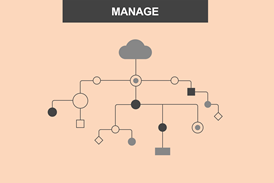AI in theory, practice, and media workflows

Although the reality of artificial intelligence (AI) as a free-thinking intelligence not unlike human intelligence is still the stuff of science fiction, it holds great promise for broadcast and media, writes Thomas Bause Mason, SMPTE Director of Standards Development.
There is no HAL 9000 of 2001: A Space Odyssey in our near future. Yes, it’s true that common applications of AI today reflect some of the character HAL’s capabilities — speech recognition, facial recognition, natural language processing, and playing chess. Nevertheless, scientists today are nowhere near creating the Artificial General Intelligence (AGI), such as HAL, capable of handling a wide variety of tasks and of specialising in any of those areas to improve performance.
While the development of AGI is many, many years off, AI is making a tremendous impact on everyday life for people around the world. In a recent SMPTE Motion Imaging Journal article, Richard Welsh discussed the nature of AI today, addressing concerns about the technology as well as hopes for its potential, particularly for the media and entertainment industry.
“The notion of AI, in general,” Welsh writes, “has raised much concern in some sectors of the scientific and technological community as well as political concerns about the impact on employment and social cohesion.”
Ultimately, however, after discussing AI from several perspectives, Welsh concludes that…
Read the full article

Sign up to IBC365 for free
Sign up for FREE access to the latest industry trends, videos, thought leadership articles, executive interviews, behind the scenes exclusives and more!
Already have a login? SIGN IN




















